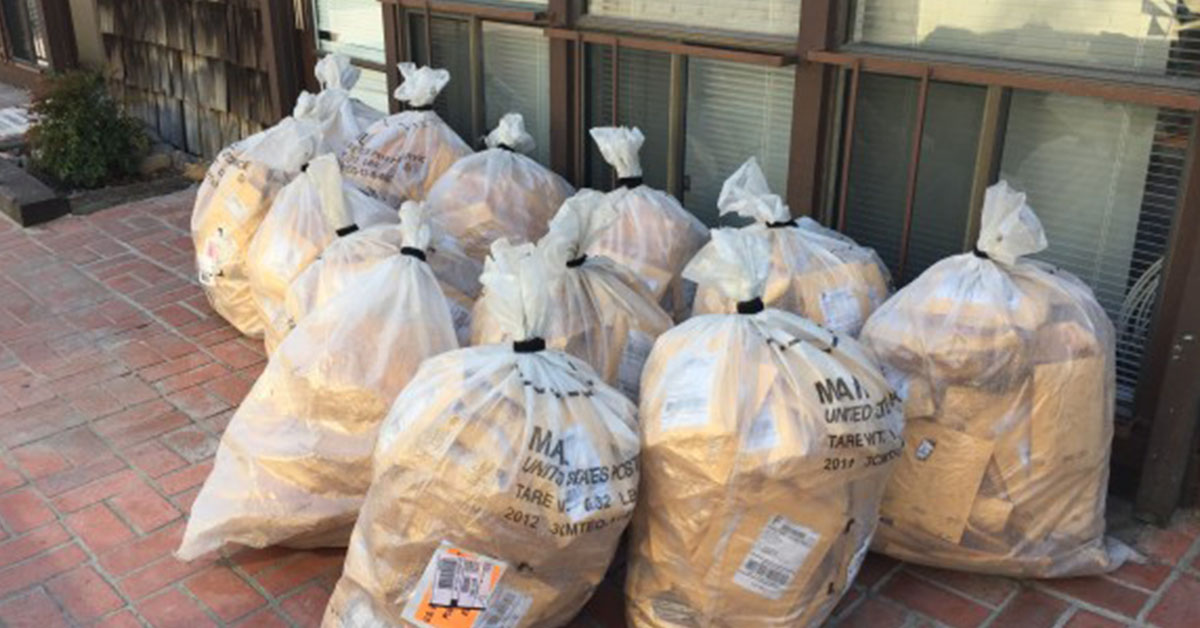In this blog post, we are going to show you the simple, effective and slightly unusual way Peloha Essentials launched and achieved very fast growth.
In just a very short period of time, and in a very competitive eCommerce market.
How fast?
Fast enough that it was ranked near the very top of the Shopify Build a Business Challenge during Q1 2016.
Fast enough that it was shipping out thousands of orders each day after only a few months in business. The mail bags in the featured image are a day’s orders stacked up outside of their office in San Diego waiting for pick up from the local Post Office!
And it was all started with a $13.76 advertising investment to get it all rolling.
Read on to learn how!
About Peloha Essentials
Peloha Essentials sells 100% pure essential oils sourced from organic and wild-crafted suppliers from around the world.
We researched the essential oil market and learned that the primary audience for these products is 35-55 year old women.
Therefore, we developed a brand that we felt would speak to this target audience’s desire to ‘reconnect’ with the healing powers of nature in general and essential oils in particular.
We launched the business with very little financial resources, which required us to be very strategic about how we attracted customers.
But we didn’t want to go slow, we wanted big growth, fast!
We decided to use a direct response approach that could generate immediate sales and cash flow. This allows us to build our brand and generate rapid revenue growth, even on a limited budget.
About Us
The team at DigitalMarketingLab.io is passionate about e-commerce, growth, and helping our clients achieve their goals.
We are constantly in the laboratory. Testing growth strategies on our own e-commerce businesses, and applying the best of what we learn for the benefit of our clients.
That’s why I’m SO EXCITED to share this Case Study with you!
You’ll learn how we applied an eCommerce Sales Funnel strategy to achieve rapid growth, profitable launch strategy for Peloha Essentials.
We’ll lay out the exact model we used – from the first $13.76 spent on Facebook ads, to reaching the million dollars in revenue mark in less than 4 months!
About the Essential Oil Industry
A big part of being successful with this model – or any e-commerce model for that matter – lies in picking the right market.
Peloha has decided to compete in an industry that is growing quickly and seems to have a lot of opportunities but is also very competitive.
The industry is dominated but a couple of very large multi-level-marketing companies that have a rabid following of customers/resellers that act as their sales channel.
These companies have established brands and are able to maintain high price points for their products, even though what they sell is essentially a commodity.
This speaks to the power of their brands.
Peloha will face an uphill battle of selling a commodity product in a very competitive, crowded marketplace…and do it without a lot of resources to work with.
We love a challenge!
Developing A Strategy For Peloha
Since Peloha had a very limited budget to work with, we knew that every dollar spent needs to achieve a very fast return on investment.
Branding campaigns wouldn’t do the trick.
Direct response campaigns that turned cold prospects into customers immediately would be required to enable Peloha to advertise in any significant volume, or for any significant length of time.
That’s why we turned to the eCommerce Sales Funnel approach.
What Exactly Is An E-commerce Sales Funnel?
An eCommerce Sales Funnel is a direct response marketing funnel used to quickly acquire new customers, ideally at a profit.
There is a lot of jargon in that sentence…let’s break it down a bit.
Direct Response means we’re spending money on advertising (in this case, on Facebook ads), and we’re looking to get people to take action and buy our products immediately.
We measure our ROI based on how much we spent to get interested people to look at our offer, and how much revenue we made directly from those folks.
This is NOT a branding exercise!
In a funnel, as opposed to a store, we bring someone to a specific offer where their only choices are to either buy or leave.
After purchase, the customer has to go through a series of related offers before being able to complete their purchase.
Let’s say you buy product 1.
Now you have to look at my offer for product 2 and product 3 before you complete your purchase.
For product 1, we use a very attractive, low-priced offer to attract as many as people as quickly as possible.
Then products 2 and 3 are called upsells, and they are KEY to building a profitable funnel.
Here’s what a simple version of a funnel looks like:

This simple, incredibly effective model is how we got Peloha Essentials launched quickly, without having to spend a ton of time and money before seeing results.
Why Amazon?
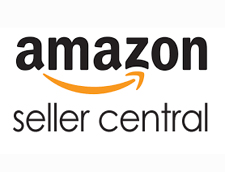
Selling on Amazon has many incredible advantages, and just about every e-commerce business can find a way to leverage the platform to grow their revenue and/or brand.
However, we didn’t like the idea of starting Peloha Essentials on Amazon just yet for a number of reasons.
First, we didn’t like that Peloha wouldn’t have full ownership of the customer. We felt that it limits their ability to learn from their initial customers – which is critical in the early days of growing a business.
Second, Peloha sells a really commoditized product that has a lot of established competition on Amazon. We believed it would be hard for Peloha to compete without a strong brand, leaving them with little to compete on other than price.
Being able to tap into Amazon’s in-built traffic is great, but for the reasons mentioned above, we wanted more control to market Peloha’s products and have direct interaction with their prospects and customers.
Here’s why we started Peloha with a ‘funnel’ instead of a ‘store’…
When we launched Peloha, we didn’t even have a store yet.
You would think that an eCommerce business would need a store to get started, right?
Well, not necessarily.
We decided to put the development of a full store for Peloha Essentials on the back-burner for a period of time, focusing on the funnel instead.
Remember, a funnel is used to take people to one specific offer and then through a path of upsells.
That’s totally different than taking somebody to a store, where they can browse around, look at a ton of different products or maybe get sidetracked and read your blog.
There are a handful of reasons why we decided to use Peloha’s limited resources to develop a funnel first:
- Very low complexity
Launching a funnel involves setting up just a few web pages with a few products instead of having to launch a whole store. In terms of images, copywriting, site structure, linking all product pages to your cart and autoresponder…there’s a LOT more hassle in setting up a full store than a simple funnel! - Very low overhead
What we love the most about this model is that it can work for even the most cash-strapped of entrepreneurs. All you need to get started is to build your funnel (my favorite all-in-one funnel-building tool for doing this is ClickFunnels), an autoresponder and a Facebook ad account (which is free!). You don’t even need to get a ton of inventory upfront if you can find a drop-shipper to send products out for you after you make a sale. - Very low commitment
Having a low complexity and low overhead business model means that you can adapt quickly. One of the biggest factors behind our success is our ability to quickly and easily test products and offers, making changes and trying new things quickly. If we had put in all of the time and effort to build a store, we’d feel much more ‘stuck’ with that store even if it wasn’t working out. But when we use a funnel, our ‘sunk cost’ in building the funnel is very low, so we don’t feel married to it. You WANT that kind of flexibility! This will allow you to test quickly so that you can find a winning offer quickly. If we had stayed committed to our first tests, there’s a very high chance we wouldn’t writing this case study right now – this is an INCREDIBLY important point! If we need to change things up, we do it! - Generates cash, a large list, and a customer base…FAST!
In most cases, you’ll be able to get much higher EPC’s (earning per click) using a sales funnel than you will with a store.
This means you’ll be able to generate more revenue per person who comes from your paid advertising, which means you can invest even more in your advertising.
Why?
Because you can take people through a very specific purchase path and not give them any options outside of that path.
It’s been statistically proven time after time that if you minimize choices for people, they will take advantage of that one thing that you are presenting them at a much higher frequency than if you give them multiple options.
And since we capture an optin before people complete the purchase, we are quickly generating a very large list of prospects and a customer base that we can then email to follow up with and send other offers – I’ll give you a powerful strategy to keep your list highly engaged – 25%+ open rates! – in a bit.
As you can tell, I’m a fan of funnels! 🙂
While I do believe other traffic sources and offer strategies work, if I had to pick one way to start or rapidly accelerate the growth of an e-commerce business, this is it!
Now, let’s take a look at how we determined the right products to put in their funnel…
Choosing Products to Sell in the Funnel
Since we were selling the initial product at a very low price point to make the offer as attractive as possible, it was important that we try to find a product that is relatively low cost for us to fulfill.
We developed a simple checklist to help us find products that we can offer at low prices and still ultimately reach profitability with our funnel:
- Is it a product that people are already buying in good volume?
- Is it $3 or less in cost to you?
- Is it easy and light to ship?
- Can I ship it without it breaking?
- Does it have a perceived value of $20 or more?
- Is an easy, spontaneous purchase?
If we were able to put a check next to all of those, then we felt confident that we had a product that was a potential winner.
Here’s The Lead Product We Chose For Peloha
Since Peloha’s essential oils and brand are an unknown commodity to the market they are targeting, we wanted to lead with a product that would attract our ideal audience but wasn’t necessarily essential oil.
Here’s what we chose:

This is an essential oil diffuser necklace, which is a popular type of product for women who use essential oils.
Since Peloha’s target market is women, this is a great product to attract our ideal customers.
Jewelry is also a very high margin/low cost to produce, which makes it ideal for us to put at the front of our funnel as a free+shipping offer.
We felt confident that if we were able to target our audience effectively with our advertising that this would be a winner.
How We Found Peloha’s Target Audience For Our Advertising
Ideally, we wanted to find the best ‘buyer’ targets to run our ads for.
What do I mean by buyer targets?
Let me give you an example.
Imagine I’m selling gardening products. I could target gardening blogs that share fun articles and photos about gardening, or I could target a gardening STORE.
There’s a BIG difference between the traffic of a gardening blog that people like to read and a gardening store where people are going to actually BUY gardening products. That store has traffic made up of actual buyers.
So, if I can target a store instead of a blog, that is a much more attractive buyer target.
We used Facebook’s Audience Insights to do a DEEP dive into possible buyer targets, and were we able to find large audiences that would indicate they are existing buyers of essential oil products.
Perfect!
Next, we needed to test to make sure that our target audience was going to respond to our offer.
We refer to this process as…
‘Buying Data’
Once we found our audience, our next move was to run multiple ad sets to get data fast, so we would know whether or not our funnel was going to work.
We call this ‘buying data’.
That’s our mindset. We are literally spending our money to buy feedback from the marketplace so we can quickly learn if we are on track or not.
This means running ads to multiple targets at the same time, so we can find out if we have a winner or not as quickly as possible.
We start all our campaigns with a $5-10/day per ad set budget. I suggest you do the same and let your campaigns run for at 3-5 days before making changes on them – be patient and let Facebook do its magic!
We were looking for obvious signs of success:
- High click-through rates
- A good percentage of people taking us up on our offer
- Ad cost per purchase is less than 50% of revenue
Remember, our goal is to find an offer that has clear momentum, and then chase that offer hard.
If our offer isn’t working, we want to be flexible enough to make changes quickly.
So if things were not looking too promising after 3-5 days, we were going to move on!
So Did It Work? Let’s Look At The Results!
Here are the numbers from our first week of advertising this offer.
The numbers underlined in red are our ad costs.
Two rows below that you’ll see our ROI.
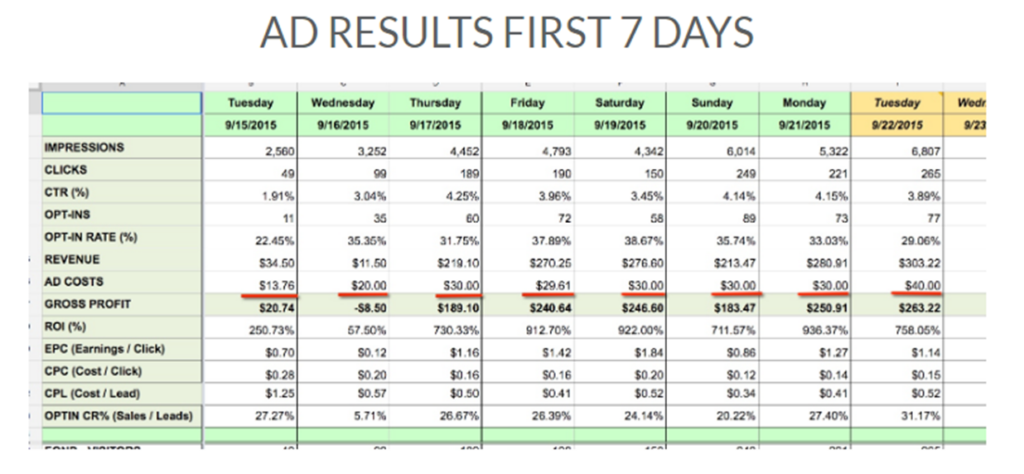
Clearly we had an offer that was working!
Not only were we getting great interest, but people were willingly buying our products the first time they saw our ads.
And these were campaigns we hadn’t even had a chance to optimize yet..that’s the kind of momentum we are looking for!
It was time to see if we could scale this campaign up to really launch Peloha Essentials fast!
Scaling Our Ad Campaign For Rapid Growth
The key to being able to ramp up our revenue as quickly as we did was our ability to tap into the incredible power of the Facebook advertising platform.
Facebook advertising is an entrepreneur’s dream!!!
Now that we seemed to have found a winner, it was time to unleash the full power of the Facebook ad platform to help Peloha Essentials scale.
There are two ways to scale: ‘out‘ and ‘up‘.
‘Out’ means that you look for other targets similar to the ones that are already working for you, and advertise to them as well.
‘Up’ means you spend more to reach more of the current audiences you are already seeing success with.
We did both.
To scale out, I continued to do research on new targets that were similar in nature to the successful targets we’d already identified, and I put about 20% of my daily budget into testing them.
To scale up, I looked for ads that are reaching our ROI target, and I increased my ad spend by 50% each day that they hit the ROI target.
If they didn’t reach the ROI target on any given day, I didn’t raise my budget…I just let it sit at it’s current budget to see if it would start performing better.
If it started performing better again, great. If it didn’t after a few days, I’d kill it.
You can see how we kept increasing our ad budget in small increments…some from increasing the ad spend on existing ads (up), some from investing in new ads to new targets (out).
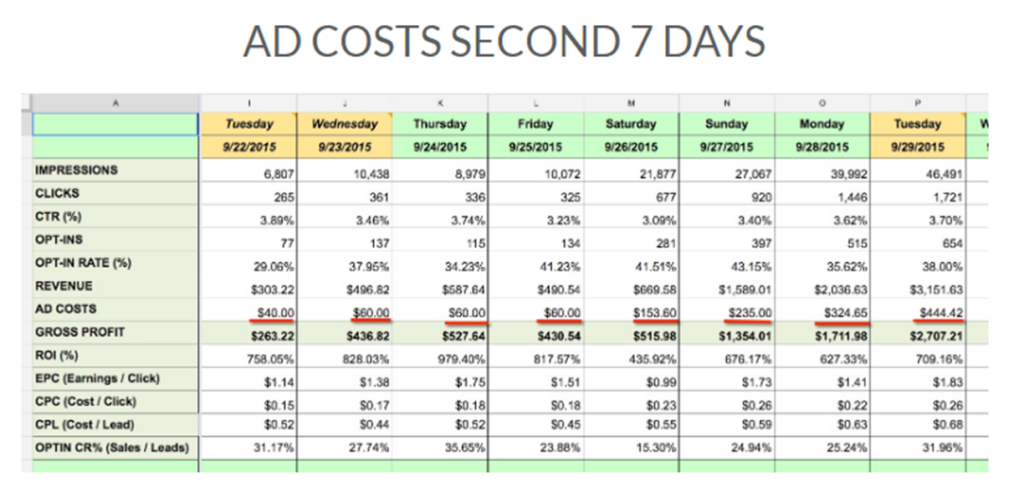
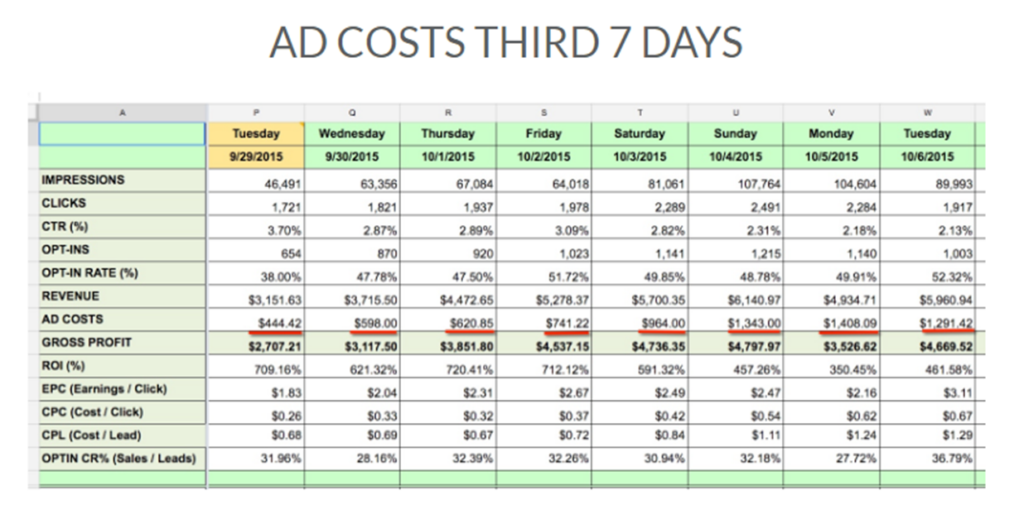
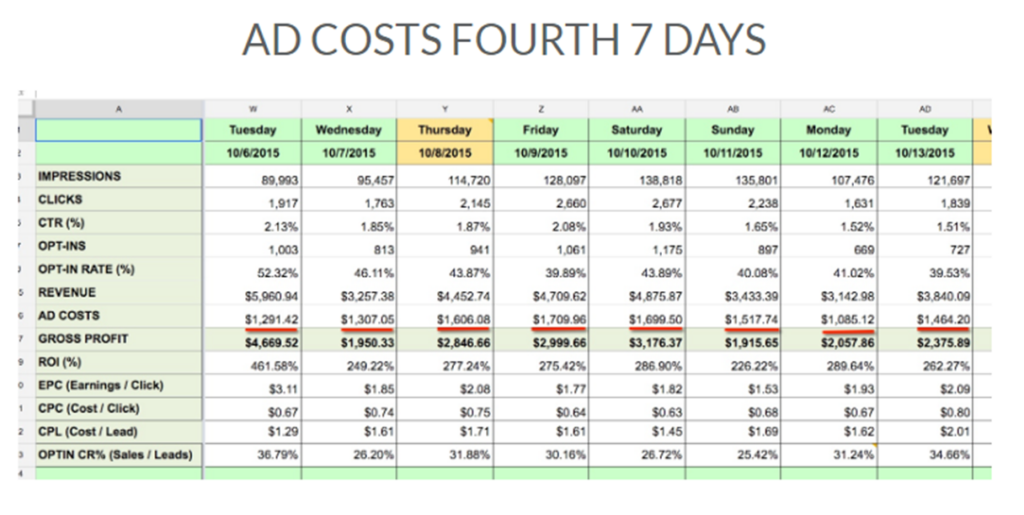
The reason why we didn’t want to do a sudden jump in ad spend, even if we were having great numbers, was so we could keep a close eye on ROI to make sure that it stayed consistent.
We didn’t want to throw our numbers off by increasing our budget too much too quickly.
Following this simple strategy, you can see that within a month we were spending more than $1,500 each day, or $45,000 each month.
That happened fast!
In November, about a month and a half after Peloha first launched their funnel, they decided to launch a full store on the Shopify platform.
Why Shopify?
We love the platform.
It’s affordable, easy to use, has tons of integrations, and they are great contributors to the entrepreneurial community.
So it was an easy choice for us.
Result: Six-Figures In Sales In Just Over 60 Days – Before Peloha Had Even Opened A Store!
By testing our new ideas as quickly and cheaply as possible using an ‘eCommerce Sales Funnel’, we were able to generate fantastic revenue before Peloha Essentials had even opened their store.
As you see in the image below, Peloha did well into the six-figures in revenue in its first 60 days – amazing growth for a new business with very few resources to work with!
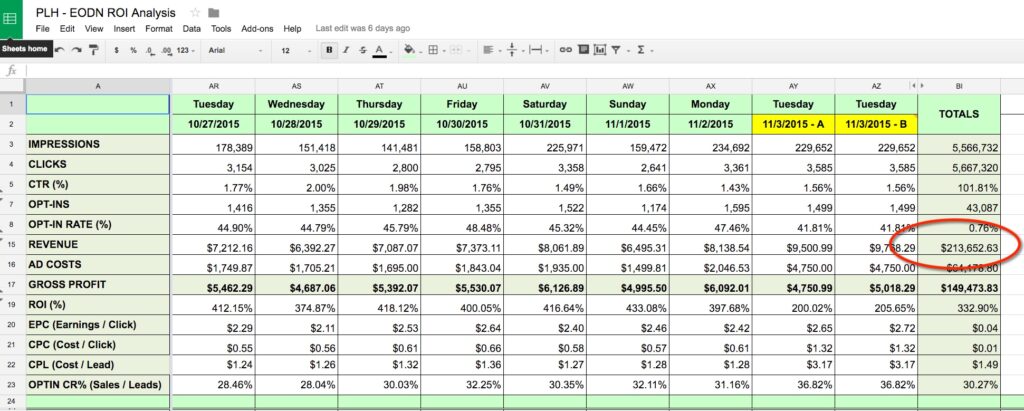
When And Why Peloha Opened A Shopify Store
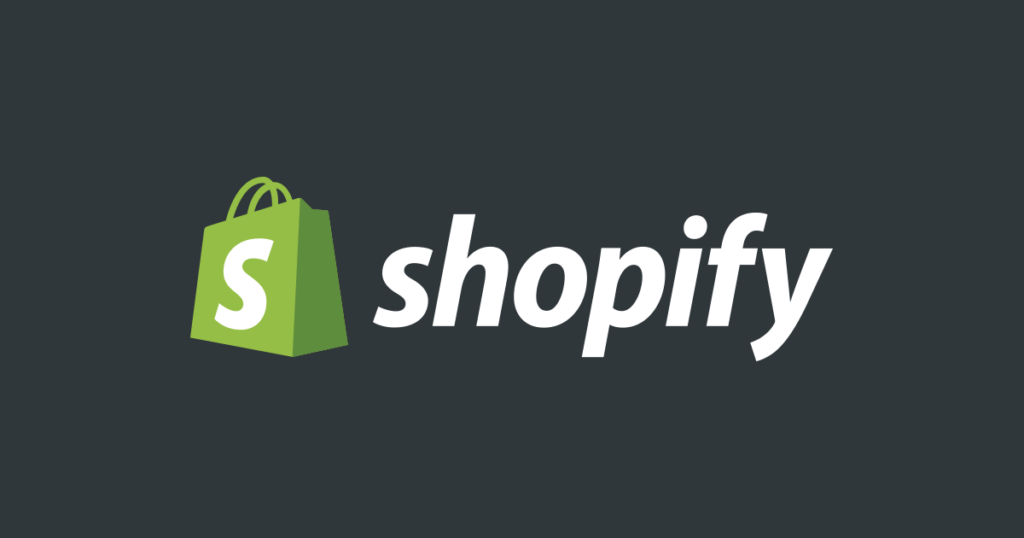
Why open a store now?
In order to capitalize on the momentum of the customer base they were building, and to hit targets for their next stage of growth, they needed to offer a much wider range of products.
Offering a wide range of products isn’t what a funnel is designed to do, so it was time to open a store.
By this point, they had already proven there was a big market for their products and they had built a really big list of prospects and paying customers.
At this point, the effort required to build a full store was justified!
They kept (and are still) acquiring customers through our funnel offers, but the store allowed them to remarket to their list and customer base through email and Facebook retargeting, and sell full-margin products to people that were now repeat buyers, fans and loyal customers of their brand.
Creating Repeat Customers
Every ecommerce store has to find a way to drive repeat business if it hopes to survive.
This is particularly true when using an eCommerce Sales Funnel, as you are spending money to develop a new customer relationship that must be capitalized on.
During the month of November, we implemented a crazy effective email strategy for Peloha that worked like gangbusters!
We called it the “Grand Opening Daily Giveaway”, in which Peloha gave away one of their products every day for the month.
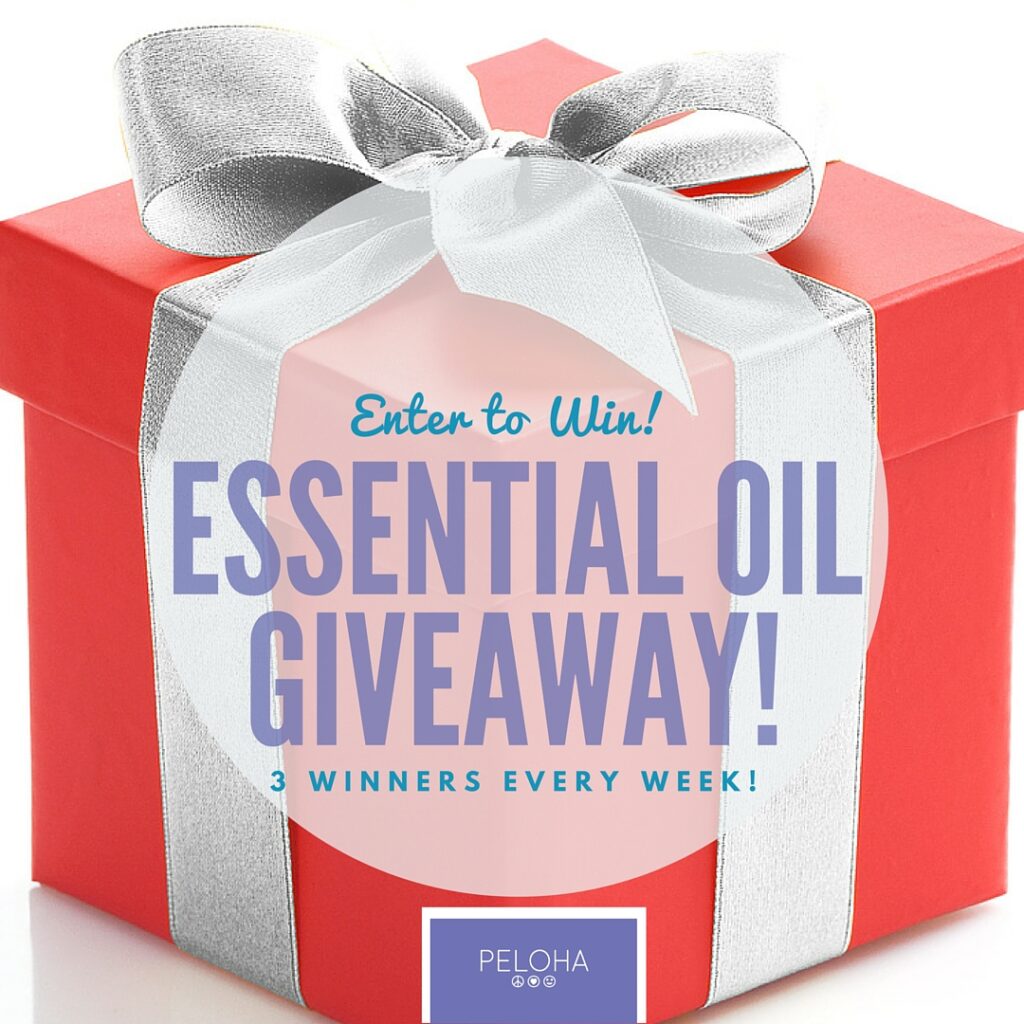
This kept their customers and prospects incredibly engaged – we were able to maintain 25% open rates throughout this campaign – and buying!
To do it, we used a viral giveaway campaign software called UpViral.
It’s a pretty slick software that allows you to build your list through people sharing your contest with their friends; I highly recommend it.
Every day we announced the day’s winner, tomorrow’s prize, and a related offer – through both email and social media.
It was an incredibly effective strategy that had a huge effect on sales in November, and helped Peloha build goodwill and loyalty with their new customers and prospects.
I highly encourage you to find a way to incorporate a similar strategy in your business!
Is An Ecommerce Sales Funnel Right For Your Business?
To be clear, not every sales funnel performs as well as this one!
But we’ve found that just about every business can utilize a sales funnel to acquire customers quickly.
Oftentimes the best a funnel can achieve is operating at breakeven, or even a slight loss.
Even in those cases, a sales funnel gives a business a new way to acquire customers fast, oftentimes cheaper than any other approach.
As a result, the eCommerce Sales Funnel has become one of our favorite tools to help existing ecommerce businesses achieve rapid growth, or entrepreneurs launch their new businesses as quickly and affordably as possible.
Summing It Up And Final Thoughts
Clearly, helping Peloha Essentials launch their business has been a fun and exciting ride, and of course not without it’s challenges.
We are HUGE fans of using the ‘funnel’ approach to quickly test your offers, launch into new markets, or rapidly accelerate the growth of an existing store.
If you’d like to build your own eCommerce Sales Funnel, we encourage you to get on our list to get more training on the subject.
And if you have any questions, please comment on this post and we’ll get back to you.


